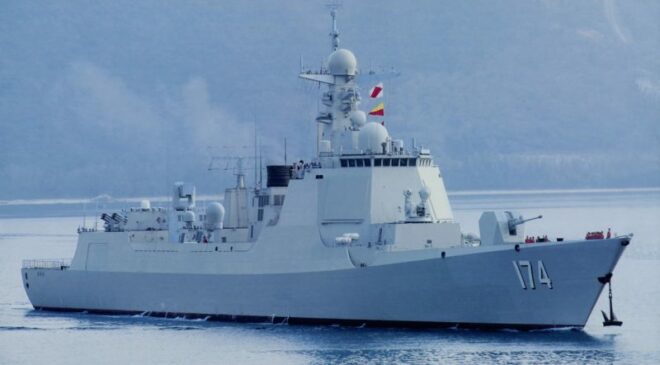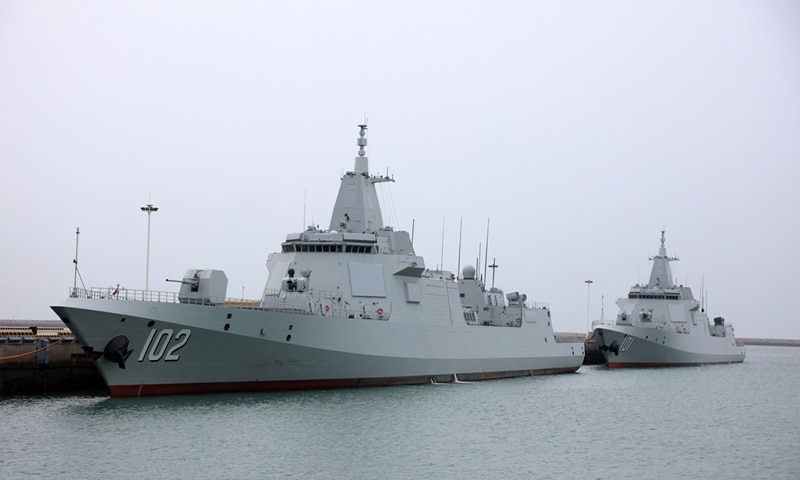The Chinese defense effort, rarely mentioned by the country's authorities, is often difficult to assess. However, the analysis of public information makes it possible to determine the real ambitions targeted by Beijing, as well as the strategy that will be used to achieve them.
In early August, the Chief of US Naval Operations, Admiral Mark Gilday, presented the most ambitious plan to build the US Navy since the end of the Cold War.
Designated " Navigation Map 2022", the document presented a strategy to bring the US Navy to have, in 2045, 12 nuclear-powered aircraft carriers, 66 nuclear attack submarines, 96 destroyers and 56 frigates as well as 3 aircraft including 000 fighter aircraft, alongside 1300 ballistic missile submarines, 12 large amphibious ships and 31 surface ships and autonomous submarines.
The objective of this plan, which still needs to be approved by the executive and supported by the legislature, although it assumes a significant increase in investment, is to keep the rise in power of the Chinese fleet under control, and to a lesser extent extent, from other potentially hostile fleets, such as the Russian Navy.
China, for its part, does not communicate on its format objectives, and very little on its strategic objectives. It is therefore necessary to extrapolate this information on the peripheral database.
To do this, it is relevant to look at the sizing of the Chinese military industrial tool, and on its production capacities observed in recent years, and more particularly on the naval industrial capacities demonstrated in recent years.
Type 055, Type 052D, Type 054A: the Chinese Navy is developing a fleet that will outnumber the US Navy by 2035
Indeed, since 2015, the naval forces of the People's Liberation Army have undergone a rapid and massive evolution, with the arrival of new ships such as the Type 052D destroyers and then their elongated DL version, as well as the Type 055 cruisers.
Further upstream, the entry into service of the Type 054A anti-submarine warfare frigates from 2008 enabled Beijing to significantly increase its offshore capabilities, alongside the LPD Type 071 assault ships, while ASM protection was entrusted to a large flotilla of Type 056A corvettes and Type 039A conventionally powered submarines.
In fact, from 2017 to today, the Chinese naval forces have received 10 new Type 052D, 8 Type 052DL and 6 Type 055 destroyers, an average of 4,5 new destroyers per year, whereas over the last 3 years , this number is approaching six destroyers delivered per year.

Nothing indicates that this frenetic pace of production is expected to slow down. Thus, today, there are no less than 12 destroyers at various stages of construction in Chinese shipyards, while the production of Type 054A or B frigate seems destined to resume at an average rate of 2 to 3 new ones. ships per year.
In fact, at this rate, the Chinese Navy will align, in 2035, from 20 to 25 cruisers, from 60 to 65 destroyers, as well as about fifty frigates, essentially the same format as that targeted by the US Navy, but in 2045.
In this dynamic, if Beijing maintains its efforts in this area, in 2045 it will have more than 50 cruisers, more than 125 destroyers and 80 to 100 frigates, i.e. a fleet twice as large as the whole of the US Navy's surface combat fleet on that date. It would even be on par with the agglomeration of the American, Australian, New Zealand, Japanese and South Korean allied fleets.
A hundred Chinese submarines in 2040
The situation will probably be similar for submarine fleets, with about a hundred submersibles on both sides, even if China will very probably have fewer nuclear-powered ships than the Pacific alliance.
On the other hand, there is no evidence that Beijing would aim to match the US Navy and its allies in terms of the number of aircraft carriers or amphibious ships, with a probable goal closer to 7 to 8 aircraft carriers and a twenty large amphibious ships, half as many as the United States and its regional allies will have.
It therefore seems obvious that Beijing is actively preparing for a tense naval showdown with the United States and its allies, but in a perimeter relatively close to the Chinese coast, as confirmed by Beijing's more moderate investments in other areas. , such as the construction of armored vehicles, or combat aircraft.
Indeed, if Chinese shipyards are now producing three times faster than their counterparts in the Pacific region, the aircraft manufacturers deliver their new combat aircraft at a rate much closer to those applied in Europe, and not in the United States.
D-10, D-15, D-16, D-20: Chinese aeronautical production handicapped by the delays in developing national turbojet engines

The rest of this article is for subscribers only
The Classic subscriptions provide access to
all articles without advertising, starting at € 1,99.
Newsletter subscription
Register for the Meta-Defense Newsletter to receive the
latest fashion articles daily or weekly


[…] […]
[…] the rapid reinforcement of the Chinese fleet is now known to all, the very significant efforts made by the People's Liberation Army to train […]